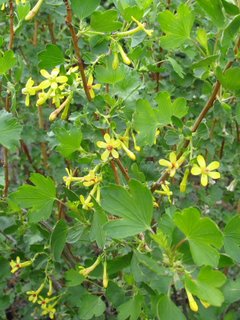Basil was a sweet, innocent, big, gorgeous young cat we loved very much. He showed up, just appeared, one morning on the neighbor's doorstep—one tiny kitten in a light dusting of snow—and he ended up with us. Two years later, he disappeared just as abruptly. We guessed he went off to become a coyote. Paths crossed; a transformation took place. Basil Coyote. We're pretty fond of coyotes too, though from a larger distance than cats, and we had a clear idea whose rights—and whose needs—took precedence.
When my sister took Sadie to "the land" (their new home in the oak woods of southwest Colorado), she understood the risk. But Sadie was an outdoor cat, inevitably a hunter. She loved the woods, the clear fall days, but only briefly. The day after she failed to come home, my sister found herself face-to-face with a great horned owl in those same woods. She had an eerie feeling she was looking straight into Sadie's wild-hunter eyes.
 Perhaps you've never been face to face with a wild owl. It's an experience you don't forget. An owl's eyes contain uncompromising wildness, more than enough to make you back up a step. The one I saw up close was hurt, but the only readable expression I caught was wariness (of me) and sharp intelligence. Not for nothing are owls thought wise. Those eyes will stay with me always. The impenetrable look of a wild predator calmly assessing ... you. (Photo by Peter Manidis, courtesy Wikipedia.)
Perhaps you've never been face to face with a wild owl. It's an experience you don't forget. An owl's eyes contain uncompromising wildness, more than enough to make you back up a step. The one I saw up close was hurt, but the only readable expression I caught was wariness (of me) and sharp intelligence. Not for nothing are owls thought wise. Those eyes will stay with me always. The impenetrable look of a wild predator calmly assessing ... you. (Photo by Peter Manidis, courtesy Wikipedia.)Some cats sometimes show us this face. Cats are only marginally domesticated (part of their appeal for some; part of their horror for others). You'll never see this look in the eyes of a companion dog. One of the cats I've known is capable of this. Tame, trusting, and occasionally affectionate as he is, looking into his eyes, as into the owl's, is sounding the depths of the unknowable. It would be difficult to be comfortable with such eyes, or complacent about life while he is watching. The wild waits always.
One of my favorite books* has a story about Jumping Mouse, who wanted to explore—to see farther than any other mouse had. It is a mouse's nature to know best what is up close, to see clearly only that which is at hand. Mice are nervous and timid little creatures, and rightly so. You would be too if you lived at the bottom of so many food chains. Although he was frightened, Jumping Mouse persisted—and eventually succeeded—in his quest. He was transformed into Eagle, a being who could fly higher and see farther than most mice ever dreamed.
Transformation is a recurring theme in Nature. What goes around comes around. Cute saying: Nature invented it. Sometimes mice become cats and sometimes cats become coyotes or owls. Sometimes German shepherds become mountain lions. I don't think we have much chance of escaping this merry-go-round. We're all just reshuffling patterns. If there's anything you value more than you value the process, maybe you're living in the wrong place.
* The book is Seven Arrows, by Hyemeyohsts Storm... recommended reading! You can read the story of Jumping Mouse at the link.







